I. Introduction
People often use the word “metaverse” to describe a shared digital environment where people can talk to each other and share information. The usual comparison is to the internet, but in this case, users move around a 3D environment under the control of their avatars rather than looking at web pages. What we mean by “artificial intelligence” (AI) is the capacity of machines to learn and carry out activities that generally require human intelligence. This tech is being used in tons of businesses. This is why AI in the metaverse can do phenomenal things.
AI in Metaverse: Importance of Discussion
Artificial intelligence is affecting us in both good and bad ways. This will likely significantly impact how the virtual world changes as the metaverse grow and becomes a more significant part of everyday life. At the intersection of the metaverse and AI, there are chances for innovation and progress, but there are also big worries about privacy and power.
II. What is the Metaverse
A. Definition of the Metaverse
In his 1992 book Snow Crash, Neal Stephenson used the word “metaverse” for the first time. Virtual reality (VR) and augmented reality (AR) headsets let users enter a shared virtual environment. As opposed to more conventional means of communication, users in the metaverse can engage in real-time interactions with one another and digital content, resulting in the sense of presence and immersion.
B. History of the Metaverse
Many media have studied the metaverse as a concept for many years. Other well-known examples include the Oasis in Ready Player One, the Holodeck in Star Trek, and the Second Life virtual world, which draws inspiration from the book Snow Crash. On the other hand, recent technological advances have made it possible to make a real metaverse.
C. Characteristics of the Metaverse
There are a few defining characteristics of the metaverse. The ability to interact with other users in real-time, using avatars to represent users in the virtual world, and access to a wide range of digital content, including games, videos, and social experiences, are all features common to virtual worlds.
D. Examples of the Metaverse in popular culture
Books, movies, and video games have all dabbled in the metaverse. Snow Crash and Ready Player One aren’t the only works that fall into this category; The Matrix and Tron and the popular online game Fortnite are also excellent examples.
III. AI in Metaverse
A. Role of AI in the Metaverse
The metaverse is a complex way to build an alternate reality similar to ours in many ways. Artificial intelligence’s purpose in the metaverse is to improve people’s time and interactions with the virtual world. Emotional Artificial intelligence is very helpful in this matter. Algorithms powered by artificial intelligence are used for content generation, virtual avatar design, and virtual helpers like chatbots. Using artificial intelligence in the metaverse has effects beyond the digital world. AI can analyze user data to improve the virtual environment and give users better experiences and more information about their behavior.
B. AI-powered Virtual Assistants and Chatbots
AI marketing tools will be very helpful in the virtual world. In the metaverse, people are increasingly using virtual assistants and chatbots run by AI. Answering questions, making suggestions, and helping users find their way around the virtual environment are ways to lend a helping hand. A user’s virtual assistant or chatbot can be tailored to their requirements.
C. AI-powered Virtual Avatars
Avatars are users’ digitized representations in the online space. AI allows for the development of more lifelike and responsive digital personas. For instance, avatars driven by artificial intelligence can imitate human expressions and reactions to engage better and represent their audiences.
D. AI-generated Content in the Metaverse
Artificial intelligence can make content in the metaverse in many different ways, such as by making virtual objects, landscapes, and even whole virtual worlds. AI algorithms can make unique, personalized content for each user to improve their experience in the metaverse.
E. Potential Applications of AI in Metaverse
The metaverse is ripe with opportunities for AI to shine. Artificial intelligence can make web pages fit the needs of each user, suggest related articles, and make them easier to read. As a bonus, it can decipher user information and reveal patterns in user choices. Artificial intelligence-powered chatbots and virtual assistants can also assist customers digitally.
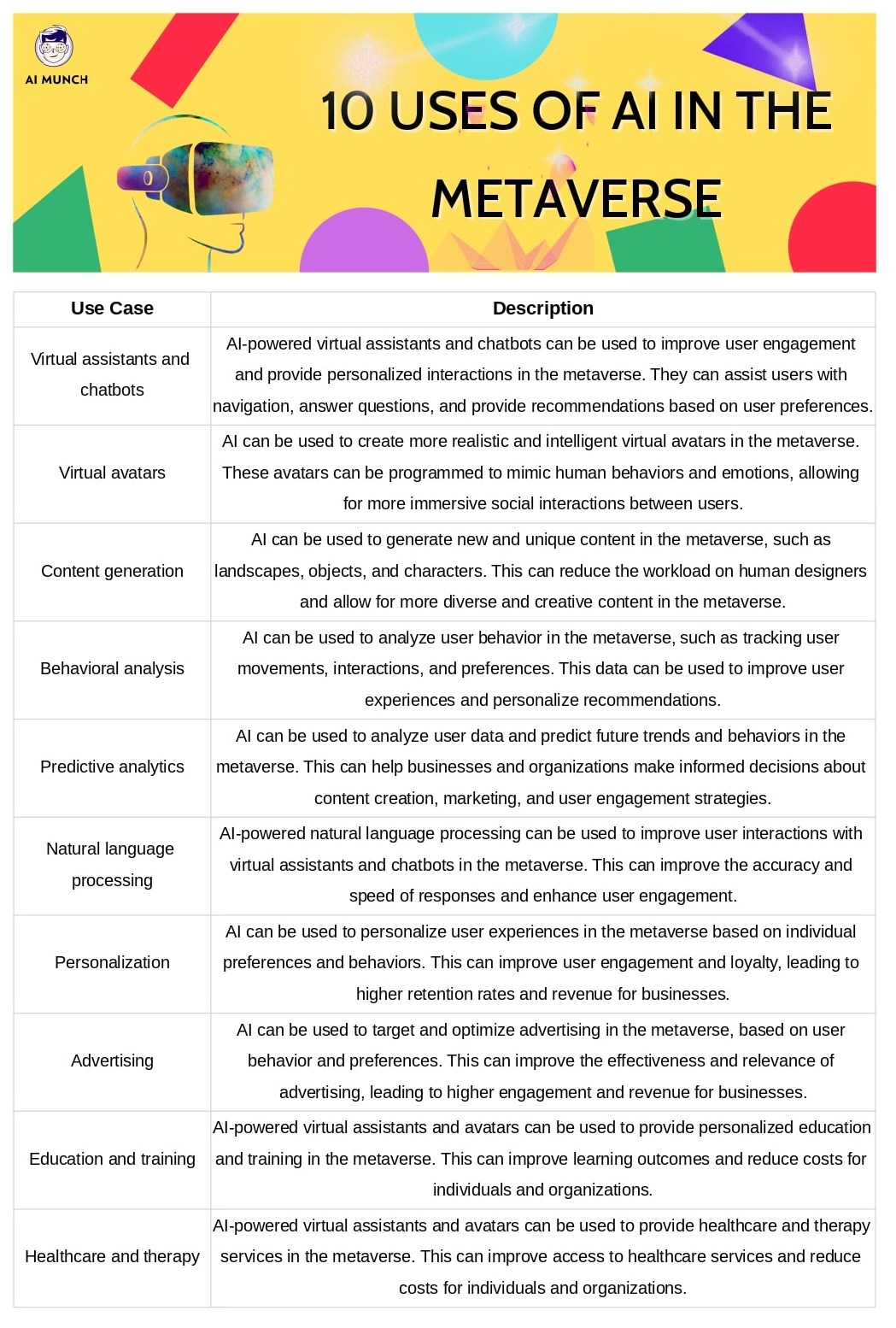
IV. AI in Metaverse: Opportunities and Challenges
A. Opportunities for Businesses in the Metaverse with AI
Metaverse businesses can benefit significantly from Artificial intelligence. With the help of this, online marketplaces can be set up to peddle digital wares, and customers can be given tailored suggestions based on their previous purchases. In the virtual world, ads can be made to fit the needs and interests of each user.
B. Opportunities for Education and Training in the Metaverse with AI
It’s becoming increasingly common to use the metaverse as a venue for formal instruction. Artificial intelligence can be used to develop interactive digital environments for instruction and study. The development of AI-powered virtual classrooms has also made it possible for students from different parts of the world to interact and study together.
C. Challenges Related to the Use of AI in Metaverse
Applying AI in the metaverse comes with its own problems, though. Data protection and privacy are crucial issues that must be resolved. Monitoring AI-generated content is essential to ensure it doesn’t promote anything negative.
D. Ethical Concerns Related to AI in Metaverse
The use of Artificial intelligence in the metaverse raises moral questions as well. People are getting more worried that AI will be used to control or influence the actions of those who use it. The real world and the online one could be profoundly affected by this.
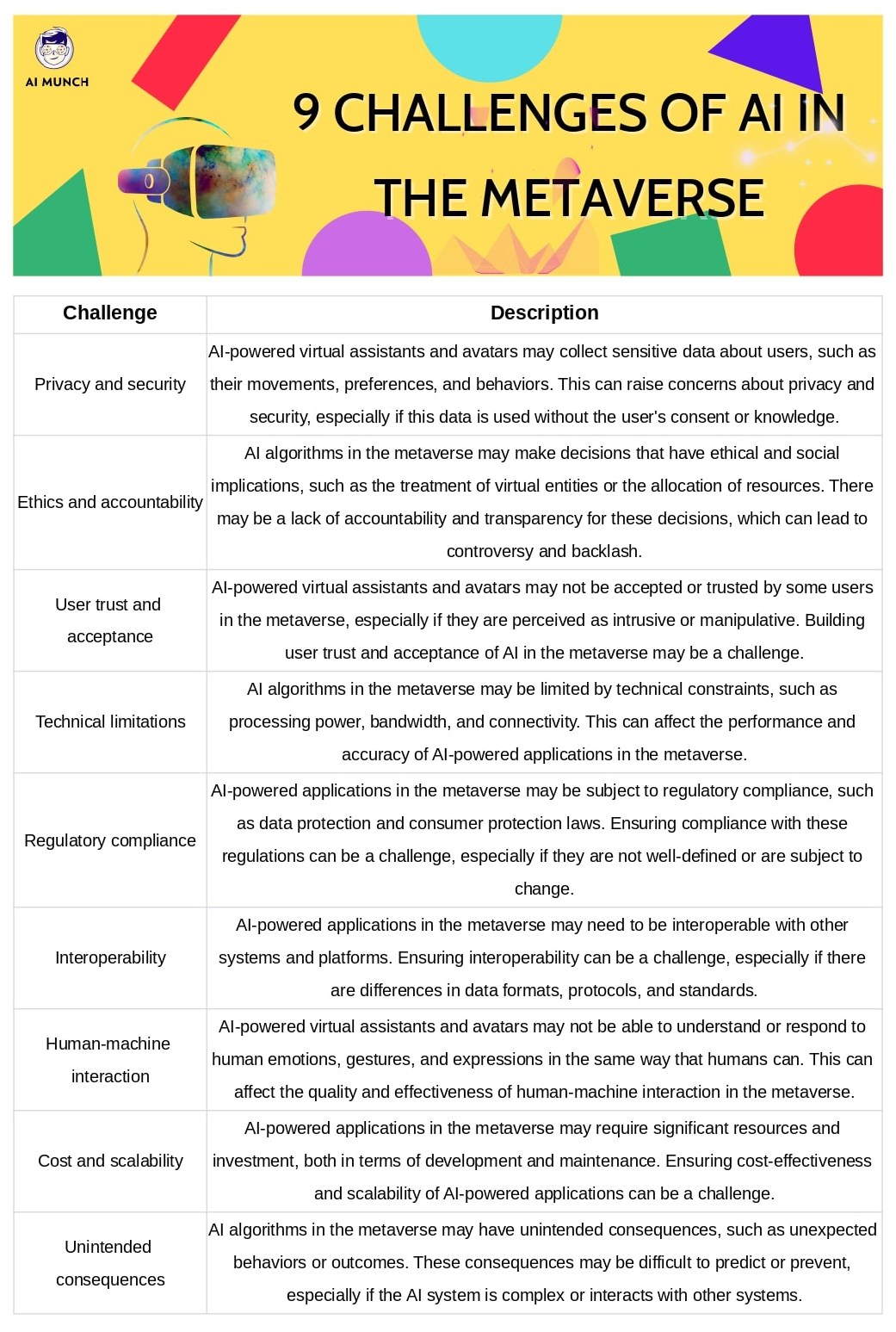
V. Conclusion
In this article, we looked at how the metaverse and AI are similar by defining each, explaining their histories and traits, and giving examples of how they are used in culture. We also looked at how Artificial intelligence can be used in the metaverse, from powering virtual assistants and chatbots to making virtual avatars and producing content. We also talked about the business, educational, and training opportunities and the ethical and technical problems that arise when Artificial intelligence is used in the metaverse.
AI in Metaverse: Future Outlook
Entertainment, education, healthcare, and commerce are just some of the fields that stand to benefit significantly from the marriage of artificial intelligence and the metaverse. As AI and machine learning technologies continue to improve, virtual assistants, avatars, and tools for making content will likely get more intelligent and have more features. Better realism and immersion in the metaverse can attract more users and investors.
Also, putting AI into the metaverse can make it easier for users to interact intelligently with virtual environments. This can make learning, training, and business operations more efficient and valuable. New business models, new ways to make money in the metaverse, and more advanced applications of AI in healthcare and therapy are on the horizon.
Final Thoughts
As the metaverse and AI grow and develop, thinking about how they will affect ethics and society is essential. Concerns about privacy, security, and who owns the data when Artificial intelligence is used in the metaverse have been raised. It also has the potential to reinforce and amplify social biases and inequalities that are already there. Ethical rules and standards are needed for how AI is used in the metaverse to build and use these technologies fairly and responsibly for everyone’s benefit.
To sum up, the field at the crossroads of artificial intelligence and the metaverse is fascinating and promising for the future. It would be best if you were careful and responsible to get the most out of these technologies while minimizing the risks they may pose.
FAQs
Using things like natural language processing (NLP), virtual reality (VR), and computer vision (CV), for example, AI can help make environments, dialogue, and images so that users can have avatars that look and sound like them. In short, digital avatars, chatbots, interfaces, and other forms of AI interaction with the Metaverse are all possible.
The purpose of artificial intelligence in the Metaverse is to recreate real-world environments digitally. And I’m a great example of how AI will be a key part of making digital spaces that will help people connect with each other.
The Metaverse is an entire digital universe that recreates aspects of the physical world. It makes use of a variety of technologies, including artificial intelligence, among others.
Virtual reality can also be used in the Internet of Things, on crypto chips, in homes, and other contexts. It can be easier to implement with the help of AI algorithms. AI solves the problems of ensuring the high integrity of resources and the privacy of nodes, which are essential for stopping security attacks. This is especially true in gaming applications.
Because of the power of AI, users of the Metaverse don’t need to know each other’s languages to have a successful conversation. Artificial intelligence (AI) can translate what a person says into the language of a machine and back again.
By quickly analyzing massive data sets, AI can reveal insights and inspire user action. To perform low-touch tasks, users can couple AI with automation or use AI for decision-making (which is the case for most enterprise applications).
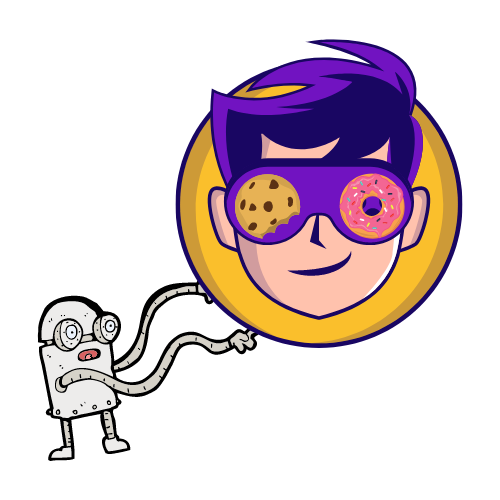


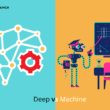
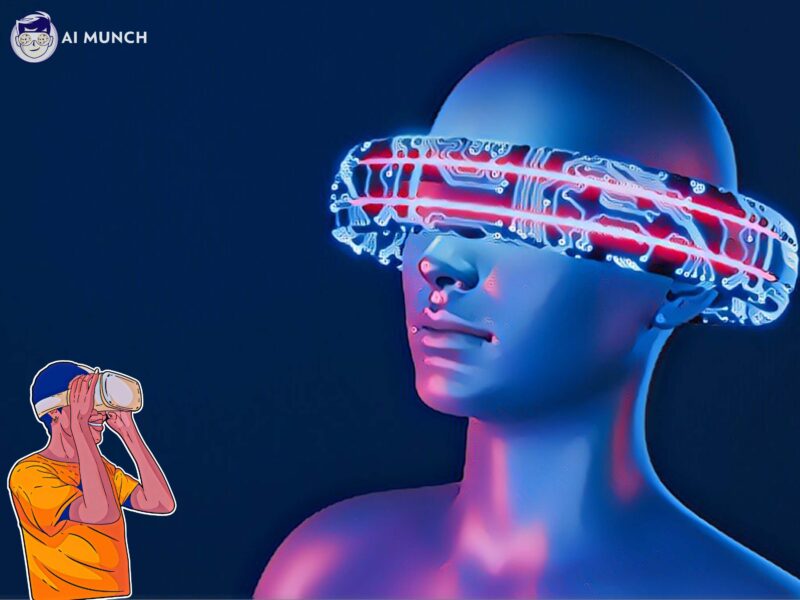


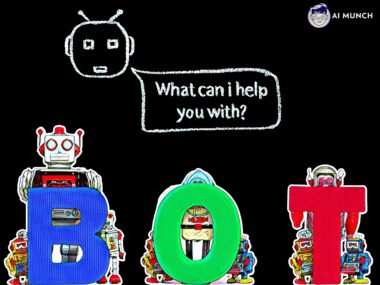
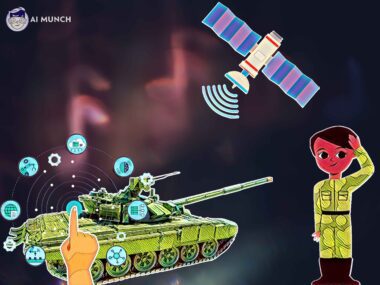


2 comments